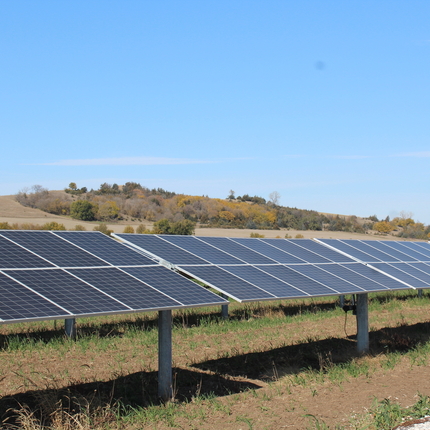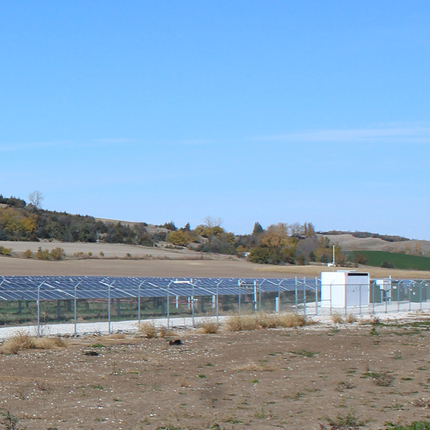Solar energy is now the cheapest form of new energy production, according to recent industry analysis. To leverage this opportunity, the Biden administration recently announced a blueprint to increase solar energy production from 4% of total U.S. power to 45% by 2050.
The goal is critical to meeting emissions reduction targets and limiting global climate change. It also represents an unprecedented opportunity for rural people. While rural people have benefited from wind energy in recent decades, solar offers new opportunities.
It lends itself better to being deployed at both large and small sizes. People can economically deploy solar on their own rooftops. Small businesses and farms can do the same. And, rural communities can deploy solar at the community scale.
Because solar can easily be deployed at a range of scales, it offers new opportunities for local ownership of our energy production.
It was more difficult to arrange local ownership of wind energy. In Nebraska, the Center helped to pass legislation designed to support community-owned wind. But, wind energy has always been difficult to scale down to homeowner or community size, and utility scale wind is exceedingly capital intensive. These factors led to few locally owned wind developments.
Rural communities have nevertheless benefited significantly from wind energy in the form of land lease payments, tax roll payments, jobs, and emissions reduction.
The coming boom in solar offers new opportunities for local ownership.
I recently installed a 4.8 kilowatt (kw) solar array at my own house. Even at this rather small size and higher per watt installation cost, I estimate a payback period of less than 15 years. The panels carry a 25-year performance guarantee, and should last longer than that.
Fifteen miles up the road from our home office, the community of Walthill (population 780) installed a 72-kw community-based project.
A 1.4 megawatt (mw) utility scale project in our home county is the first in the region to include a large battery on site. The project was developed by a private developer in partnership with the local public utility.
Solar can support other land use objectives, too. The Center is part of a new collaborative to support agrivoltaics, studying how to combine solar with other agricultural and conservation uses of land.
Given these attributes, solar represents an opportunity for widespread ownership of clean energy production alongside a lower cost of energy, jobs in installation, tax revenue for communities, emissions reductions, and energy independence.
Feature photos: A utility scale project in Burt County, home of the Center for Rural Affairs, developed by a private developer in partnership with the local public utility. This is the first in the region to include a large battery on site. | Photos by Rhea Landholm






